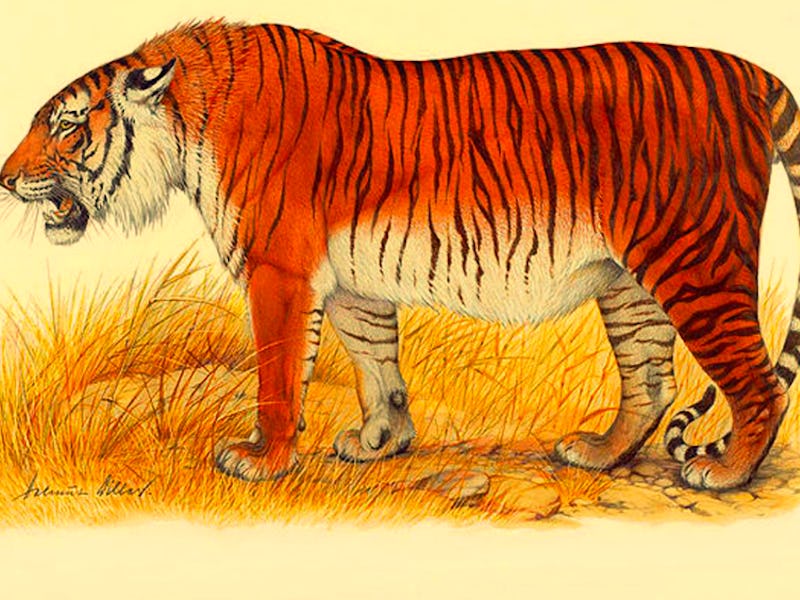Scientists Want Extinct Caspian Tigers Back in the (Former) USSR

It’s been nearly fifty years since Caspian tigers, voracious 300-pound felines that proved inconvenient to Soviet troops pushing borders into Central Asia, were driven extinct. But there’s extinct and then there’s extinct. Scientists still have genetic information on the big cats and now some have laid out a plan in the journal Biological Conservation to bring them back — or something “back” adjacent. The new apex predators will be dubbed Amur tigers, but they’ll be Caspians in every other way.
Researchers have argued for the past decade that tigers could be reintroduced to Central Asia, but it wasn’t until now that they’ve offered hard data suggesting a big cat population could thrive. After an analysis of scientific literature already written on Caspian tigers, a research team made up of State University of New York and World Wide Fund for Nature scientists determined that there are two habitable patches that would work for repopulating the area with Amur tigers. Both of these zones are both located in Kazakstan. The researchers estimate that if 40 to 55 tigers are brought into these zones, then the population will grown to around 64 to 98 tigers within 50 years.
A Caspian tiger in 1895.
However, certain things will have to happen before a bunch of tigers are moved to Kazakstan. First, they need to make sure there’s enough prey for these tigers to munch on — the researchers estimate it will take five to 15 years to restore the wild deer populations necessary to feed the felines. Water consumption from the nearby Ili River will need to be regulated to create the water levels necessary for reed habitats, and the humans who live by will have to quit it with uncontrolled fires that cause riparian zone degradation. Finally, “human saftey and socio-economic benefits for local populations need to be addressed” — a sustainable future for these tigers is dependent on how humans in the area deal with their existence.
Caspian tigers once ranged throughout Turkey, Iran, Iraq, northwestern China, and much of Central Asia. Their extinction stemmed from poisoning and trappings at the hands of Soviet Union-encouraged bounty hunters, and they were eventually exterminated when irrigation projects destroyed their and their prey’s habitats.
Contrastingly things are looking up for the Amur tiger which, while there are only an estimated 530 that live in the wilds of far east Russia, are described by the researchers as “the only subspecies that has significantly increased in number in the last 65 years.” Big cats have “high adaptive potential” to new environments, so it’s likely that these tigers are chill enough to thrive in their new home.
Importantly, these tigers will be welcomed with open arms by the Kazakhstan government, which is hopeful that more tigers means more cash flow by the means of wildlife tourism.